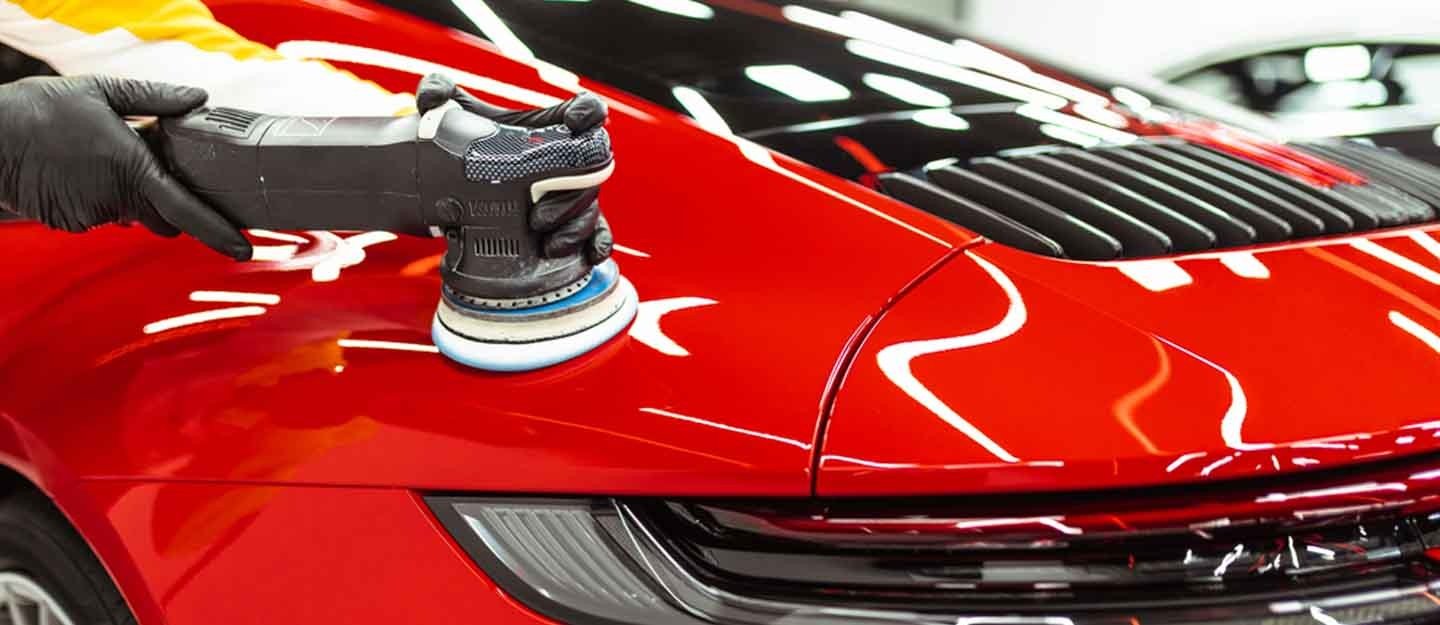Car polish is a key component in vehicle maintenance, providing not just a glossy finish, but also offering protection from the elements. Whether you are a car enthusiast or someone who simply wants to keep their vehicle looking new, understanding the importance and application of car polish is crucial. In this guide, we’ll dive deep into what car polish is, how it works, and why it’s an essential part of your vehicle care routine.
What is Car Polish?
Car polish is a compound designed to remove imperfections from the surface of a car’s paintwork, such as swirl marks, fine scratches, oxidation, and water spots. Unlike car wax, which primarily acts as a protective layer, polish works by smoothing the paint surface to restore its original shine. Most polishes contain fine abrasives that gently remove the thin layer of oxidized paint, leaving behind a smoother, more reflective surface. In some cases, car polish can also help restore faded paint, bringing back its luster.
Car polish is often confused with car wax, but these two products serve distinct purposes. While wax offers a protective barrier against environmental contaminants like UV rays, water, and dirt, polish focuses on improving the aesthetic appearance of the paint by removing imperfections. The use of both products in combination—polish followed by a layer of wax—is often recommended for the best results.
Why Should You Polish Your Car?
Over time, your car’s paint is exposed to harsh environmental conditions. Sun exposure, rain, bird droppings, tree sap, and even road salts can all take a toll on your car’s exterior, leading to discoloration and the development of unsightly imperfections. Regular polishing not only keeps your car looking fresh but also helps to extend the life of the paintwork.
- Restoring the Shine: Even with regular washing, your car’s paint can lose its glossy finish due to exposure to UV rays and contaminants. Polishing helps restore that shine by buffing away the oxidized top layer of paint.
- Removing Scratches and Swirl Marks: Light scratches, swirl marks, and water spots can accumulate over time, dulling the car’s appearance. Polish helps to smooth out these imperfections, improving the overall look of the vehicle.
- Protecting the Paint: Polishing, when done correctly, can help enhance the protective qualities of your paintwork. By smoothing the surface, it allows wax or sealant to adhere better, offering long-lasting protection.
- Improving Resale Value: A well-maintained, shiny exterior can boost the resale value of your car. Potential buyers are more likely to be attracted to a vehicle that looks well-cared-for.
Types of Car Polish
There are several types of car polish, each designed to serve different purposes depending on the condition of your car’s paint.
- Cutting Polish: This is the most abrasive type of polish. It’s designed to tackle deeper scratches and significant imperfections in the paint. Cutting polish is typically used for cars that have seen a lot of wear and tear or have been exposed to harsh environmental conditions.
- Finishing Polish: This type of polish is much less abrasive and is designed for vehicles that are already in good condition. It’s ideal for enhancing the gloss and shine of your car’s paint without removing too much of the surface.
- All-in-One Polish: As the name suggests, all-in-one polishes combine cutting and finishing properties. They’re perfect for people who want a quick, effective solution for removing imperfections while also improving shine.
- Swirl Remover: Specifically designed to tackle swirl marks (circular scratches often caused by improper washing techniques), this polish works by smoothing the paint’s surface to remove the marks and restore clarity.
How to Polish Your Car
Polishing your car requires a little patience, but the results are well worth the effort. Here’s a step-by-step guide:
- Wash Your Car: Before you polish, ensure your car is thoroughly washed to remove any dirt or debris. Polishing over dirt can cause additional scratches.
- Choose the Right Polish: Depending on your car’s condition, select the appropriate polish. If you have light imperfections, a finishing polish might be enough. For deeper scratches, consider a cutting polish.
- Apply the Polish: Apply a small amount of polish to a microfiber pad or applicator. Work in small sections, applying the product in circular motions. Avoid over-applying the polish; a little goes a long way.
- Buff the Surface: Once you’ve applied the polish, use a clean microfiber towel to buff the surface in circular motions. Continue buffing until you notice a smooth, glossy finish.
- Apply Wax or Sealant: After polishing, apply a layer of car wax or sealant for added protection and to lock in the shine.
Conclusion
Car polish is an essential part of keeping your vehicle looking its best. Whether you’re aiming to restore its shine, remove imperfections, or protect the paintwork, regular polishing can make a significant difference. By understanding the types of polishes available and following the correct application steps, you can maintain a vehicle that not only looks great but is also protected from the elements. Make car polishing a regular part of your vehicle maintenance routine, and you’ll enjoy a car that looks as good as new for years to come.
More Info



